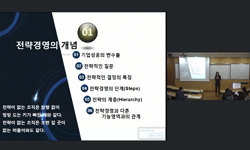● Authors: RNs of the Renal unit, Seoul National University Hospital, Korea ● Purpose: Conventionally the anticoagulants has been used in the case of extracoporeal circulation like hemodialysis. Heparin use may increase bleeding tendency. To dimi...
http://chineseinput.net/에서 pinyin(병음)방식으로 중국어를 변환할 수 있습니다.
변환된 중국어를 복사하여 사용하시면 됩니다.
- 中文 을 입력하시려면 zhongwen을 입력하시고 space를누르시면됩니다.
- 北京 을 입력하시려면 beijing을 입력하시고 space를 누르시면 됩니다.

무헤파린 혈액투석시 지속적 생리식염수 주입법과 간헐적 생리식염수 주입법의 비교연구 = Comparative Research of the Continuous normal saline infusion and the Intermittent normal saline infusion in Heparin-free hemodialysis patients.
한글로보기https://www.riss.kr/link?id=A35492658
- 저자
- 발행기관
- 학술지명
- 권호사항
-
발행연도
2000
-
작성언어
Korean
- 주제어
-
KDC
512.805
-
등재정보
KCI등재
-
자료형태
학술저널
- 발행기관 URL
-
수록면
41-48(8쪽)
- 제공처
-
0
상세조회 -
0
다운로드
부가정보
다국어 초록 (Multilingual Abstract)
● Authors: RNs of the Renal unit, Seoul National University Hospital, Korea
● Purpose: Conventionally the anticoagulants has been used in the case of extracoporeal circulation like hemodialysis. Heparin use may increase bleeding tendency. To diminish the bleeding tendency, various heparinization methods have been used such as regional heparinization, low-dose heparinization, and heparin-free method. Despite their benefits, they provoke problems such as the blood loss related to dialyzer clot, the necessity of ultrafiltration due to excessive normal saline infusion etc. The purpose of this research is to find safe and more efficient ways of hemodialysis practice, especially for those who have active or potential problem of bleeding.
● Design: This study is quasi experimental research using repeated counter balancing measure design.
● Methods: From September first 1999 to October 23rd 1999, we completed the study at the renal unit of Seoul National University Hospital. We compared the dialyzer clot rates between the continuous normal saline infusion and the intermittent normal saline infusion, for ten patients in heparin-free hemodialysis. And the data of two different methods were analyzed by Wilcoxon Rank sums 2-sample test.
● Results: The study reported the rates of 9.75 and 11.25 respectivly for the continuous normal saline infusion and the intermittent normal saline infusion in average of three hour period of heparin- free hemodialysis. The Z parameter indicated 0.5316. This result implies that the hypothesis was not supported that there would be a significant rate difference in the two tested methodologies. The clot rates of the four hour period of hearin-free hemodialysis for the continuous normal saline infusion and the intermittent normal saline infusion were 10.70 and 10.30 respectivly which were significantly higher than alpha value 0.5. This study tested statistically low sample size due to the limited number of patients, therefore the following research would be required to increase the number of sample size to improve.
● Implication: From now on, in clinical implication, considering the results between the three-hour period's and the four-hour period's, as more efficient and safer heparin-free hemodialysis methodology, the continuous normal saline infusion with appropriate blood flow rate and duration will be recommended.
동일학술지(권/호) 다른 논문
-
골절노인환자의 가족지지, 자가간호이행행위정도와 삶의 만족정도
- 병원간호사회
- 김영미
- 2000
- KCI등재
-
- 병원간호사회
- 장보경
- 2000
- KCI등재
-
산후 가정간호를 통한 모유수유 강화교육 프로그램이 산모의 모유수유 실천과 지속에 미치는 효과
- 병원간호사회
- 엄진원
- 2000
- KCI등재
-
- 병원간호사회
- 김경숙
- 2000
- KCI등재




 RISS
RISS KISS
KISS






